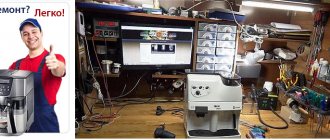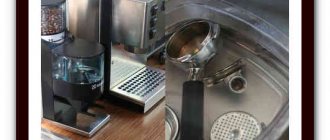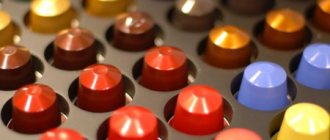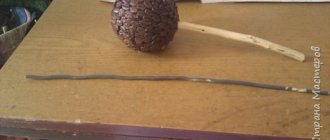Abstract for the DeLonghi ESAM 2800 Caffe Corso coffee machine.
We want you to have a great time with your new device. Take a couple of minutes to read this instruction manual for the DeLonghi ESAM 2800 Caffe Corso. This will avoid danger or damage to the machine.
When transferring/selling a device to other persons, the annotation must be transferred along with the device.
Main properties of DeLonghi ESAM 2800 Caffe Corso:
Power: 1450 W,
Water tank volume: 1.8 l,
Maximum pressure: 15 bar,
Options: coffee strength control, hot water portion adjustment, pre-wetting,
Automatic decalcification: yes,
Possibility of making cappuccino: yes, manual production,
The DeLonghi ESAM 2800 Caffe Corso manual contains fundamental information: preliminary steps, turning the device on and off, automatic shutdown, water softening filter, making coffee, cappuccino, decalcification, programming water hardness, meaning of indicators, troubleshooting.
Coffee machine DeLonghi ESAM 2600.
How often should I clean?
A distinctive characteristic of all modern Delonghi devices is that they are equipped with an automated system that allows you to monitor the level of salt deposits on the internal walls of the mechanisms. When the time comes, a message will appear on the screen indicating that cleaning is required.
Indirect signs indicating accumulation of sediments include:
Water leakage.- The appearance of flakes in the drink. They can float in a fine suspension on the surface of the coffee, or fall out into the glass in large particles.
- Increased noise during operation of the coffee machine.
- Weakening of water flow, intermittency of the stream.
- Deterioration in the taste of the finished drink.
A message about the need to descale appears on the display after a certain period of time, which was set by the manufacturer in the settings.
The time interval is determined by the degree of water hardness . By default this indicator is one. If the water is even harder, then the program needs to be reinstalled. In this case, the signal about the need for decalcification will appear more often.
The average frequency of cleaning a Delonghi coffee machine is once every 2-3 months.
Removing scale in a Delonghi coffee machine more details
Only the general cleaning procedure has been mentioned above, however additional questions may arise during the process. Cleaning takes an average of 25 minutes, the device will gradually use the solution poured into the reservoir, passing through small doses through the hydraulic system of the device.
Once all the liquid has been consumed, the device will indicate this with an audible signal, then the tank should be emptied and cleaned with clean water.
After this, the device will rinse the device personally, again the flow of water will begin in small doses, passing it through the finished drink and water supply units. If you use filtered water when making coffee, the machine will indicate that it needs cleaning approximately every two or three months.
If you use tap water, this procedure will be more frequent. Do not use distilled water, it is completely devoid of minerals, which, on the one hand, eliminates the possibility of the formation of encrustations, and on the other hand, it is not beneficial for the body
What happens if you don't remove plaque?
If you ignore routine descaling procedures for your coffee machine, the machine will quickly fail. Salt deposits will begin to grow at twice the speed, since it is easier for them to “catch” on a rough surface than on a smooth surface.
Water flows through a clogged duct system worse. As a result, the taste of the finished drink will deteriorate. The device itself will not cool completely, as the parts are clogged with scale. With such an attitude towards the device, breakdowns cannot be avoided.
The most common reason is blockage of tubes and overheating . Therefore, it is better to spend 20-30 minutes cleaning the device than to pay for expensive repairs later.
Delonghi caffe corso coffee machine DIY repair
I have written more than once that I do not repair coffee machines and do not have the necessary knowledge for diagnostics, especially remote diagnostics, “using photographs.”
However, sometimes I do some simple things for myself. Just recently there was a reason to get into the Delonghi ECAM 350.55, and I decided that it was worth documenting the process, in case it would be useful to someone. Especially in light of the fact that 90% of the company’s models with automatic cappuccino makers on the ECAM platform - the most common among Delonghi - are almost identical inside.
The reason was uneven pouring of coffee from the dispenser - the left nozzle poured noticeably worse. In general, this is an extremely common complaint, even judging simply by the reviews under my reviews. This can happen on absolutely any car, and the DeLonghi brand is not particularly remarkable here. In 99% of cases it is simply a clogged feed spout. Inside, one tube approaches it and the flow is simply mechanically, by grooves, divided into two holes. Either the hole or the grooves in the spout are simply clogged with something. A long, narrow brush that needs to be screwed into the nozzles often helps. But not always.
It happened this time too, the brush didn’t help, I had to get to the dispenser. And you can get to it only by disassembling the body almost all the way around. Fortunately, Delonghi coffee machines are much easier to disassemble than “Germans” like Bosch or “Swiss” like Jura (these generally only require service or with special tools), in terms of complexity almost at the level of Saeco and Philips. Go!
Cleaning Rules
You can clean the coffee machine automatically by running the self-cleaning function. Another option is to remove the scale yourself. For the procedure to be effective and safe, you must strictly follow the instructions.
How to use the self-cleaning function?
To use the self-cleaning function, you need to follow these steps:
Connect the device to the network.- Go to the menu by pressing the R button.
- Switch the knob until the “Descaling” option appears.
- Confirm the selected action by clicking “ok”.
- Empty the water tank, add anti-scale agent, diluted to the required concentration. All actions are confirmed on the display.
- Place a container under the coffee supply unit with a capacity of at least 1.5 liters.
- Wait until the message “The appliance is descaling” appears.
- After half an hour, a new message “Fill the tank” will appear. To do this, you need to remove the container, drain the residue from it, rinse thoroughly, fill it with clean water and put it back in place.
- Also drain the vessel that was used to collect the anti-scale and return it to its place.
- After this, press the “ok” button to start the rinse cycle.
- When the water container is empty, the display will show “Rinse complete. Do you confirm?”, you must click on the “ok” button again.
After a complete decalcification cycle, the device will be ready for further use.
Alternative way
If the Delonghi coffee machine model is not equipped with an automatic cleaning function, this must be done manually.
Procedure:
- drain the water from the container;
- pour anti-scale into it, diluted to the required concentration;
- connect the device to the network;
- prepare the coffee until all the cleaning mixture comes out of the tank;
- pour clean water into the container;
- Repeat the process with cold water to flush the system of any remaining detergent.
After cleaning is completed, you can use the device as usual.
To complete the process of ridding the coffee machine of scale and salt deposits, it is recommended not to drink the first 2-3 cups of coffee, but to drain it.
Common types of faults
The simpler the mechanism, the fewer malfunctions it can have. Repair of drip coffee makers involves washing the filter mesh to remove accumulated oils. When using tap water, the tubes become clogged with scale. It is enough to buy a special product and rinse the drainage system according to the instructions on its packaging. You should not save money and replace the special composition with vinegar. Soon you will have to change the gaskets, which it will corrode.
When the drip coffee maker stops heating, you need to check the wire and contacts. If they are ok, then the heating element has burned out. Replacing it will cost more than buying a new coffee maker of the same type.
Most problems with capsule coffee makers are related to coffee tablets:
- incorrectly inserted;
- another brand of capsule;
- The lever is pressed weakly.
You need to buy tablets only of the same brand as the coffee maker, carefully throw them into the piercing mechanism and press the lever quite sharply. If this does not help, you should disassemble and clean the mechanism.
In horn models, the seal is most often broken. Water begins to drip from under the horn. The reason is that the sealing ring is dirty or destroyed. The ring needs to be washed. If there are cracks in it, replace it. You cannot put car gaskets on them or from washing machines. The rubber in them has a different composition and is toxic to food.
Leaking under the brewer is more common with DeLonghi coffee makers than others. There is no need to rush to the service center; repairing a Delonghi model coffee machine with your own hands is quite simple. A detailed description with diagrams is in the technical data sheet for the car.
Each model has its own weaknesses. A clogged filter most often becomes the cause of malfunctions in the Saeko Minuto, Roventa, Nescafe Dolce Gusto, and Krups machines .
The high pressure pump most often needs to be replaced on coffee makers of the Vitek model range. The coffee begins to flow weakly and brew poorly.
Coffee machines "Saeko", "Delong", "Philips" have a complex electronic system and a drive that is sensitive to voltage changes. They have disposable overload fuses installed inside them. When there is a power surge in the network, the protection is triggered and they no longer start. Disassembling and replacing the fuses of a Saeco Minuto coffee machine with your own hands is possible if you have spare parts and knowledge of electrical engineering.
The main reasons for the breakdown of coffee makers of all types are the same:
- filters are clogged;
- using untreated tap water;
- power surges;
- careless attitude towards equipment;
- lack of regular cleaning;
- wear of parts during long-term use.
If the coffee maker breaks down, you need to disassemble it, rinse and clean it, check the integrity of all seals and parts. After this, in most cases the unit begins to work.
Before repairs, you should analyze the type of failure and the possibility of independently troubleshooting the Dolce, Delong and other devices.
To repair Saeco coffee makers, you should know that the body cannot be disassembled. The cover is secured with several screws. First you need to remove it, then dismantle the teapot and other components through the top. This is inconvenient to do; you need to use screwdrivers and various stops.
Special cleaners for Delonghi devices
To remove scale from Delonghi coffee machines, it is recommended to use branded cleaners. They can be purchased online:
Delonghi “Eco Calc” descaler for automatic coffee machines. The product contains natural ingredients that allow you to carefully clean the device from scale. One bottle is enough for 5 cleanings. The cost of 500 ml of solution is 1270 rubles.- Delonghi DLSC500. This is a universal composition that can be used to clean not only coffee machines, but also coffee makers. The price of one bottle is 1430 rubles.
- Delonghi DLS200. The composition is designed specifically for cleaning coffee machines to remove scale. It is bottled in small plastic containers of 100 ml. One sachet is enough for 1 cleaning cycle. There are 2 containers in the package, the price is 750 rubles.
The manufacturer warns that the use of other descaling agents may negatively affect the functionality of the device.
The video will show you how to remove scale from a Delonghi coffee machine using a proprietary cleaner:
How to clean individual elements?
Features of cleaning individual elements of the coffee machine:
- Holder. After removal, you can find a dark coffee coating on it. To get rid of it, soak the part in hot water for 20 minutes and clean it with the hard side of a foam sponge.
- Cappuccino maker. Before cleaning the cappuccino maker, condensate is drained from it. To get rid of scale, soak the cappuccino maker for 20 minutes in hot water with a small amount of soda, rub with a sponge, rinse and wipe with a clean, dry cloth.
- Infuser . Once every 2 weeks, the brewing unit is removed, washed under running clean water and replaced. If the unit is not removable, then a tablet for cleaning coffee machines from scale is placed in the compartment for ground coffee, a large container is placed under the horn and the coffee preparation cycle is started. The procedure must be carried out until the tablet is completely dissolved, that is, 4-5 times. At the end of cleaning, the system is rinsed with water.
Helpful information
To ensure that the process of descaling your coffee machine is successful, you must adhere to the following recommendations:
Before cleaning, carefully study the instructions included with the device. The procedure may differ for different models.- You should not use folk remedies to clean your Delonghi coffee machine. They can lead to malfunction of the device and its breakdown.
- After cleaning, be sure to rinse the device with water to remove any remaining detergent.
- During the process of washing away scale, water may splash in different directions, so you need to spread a towel next to the device.










